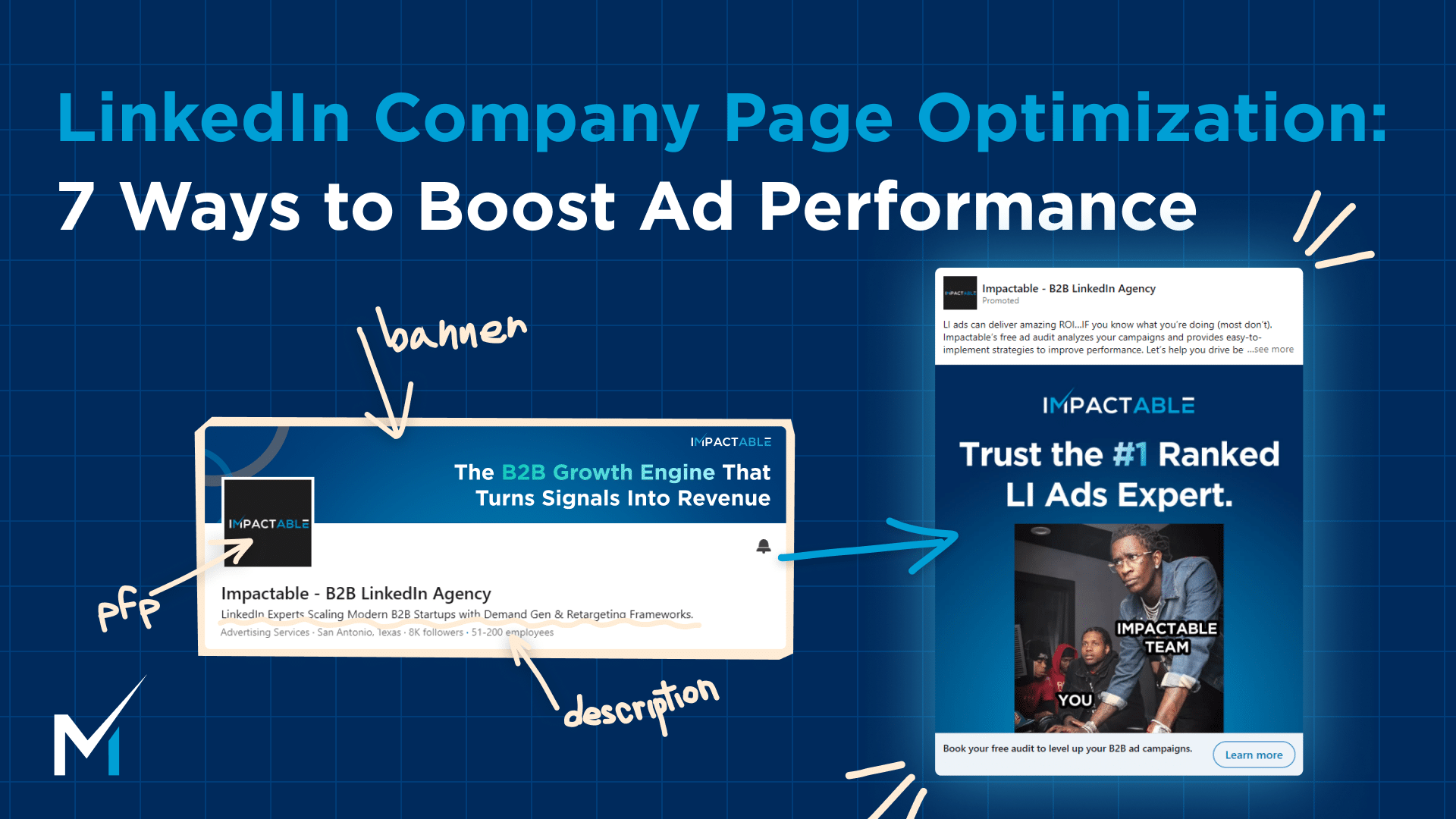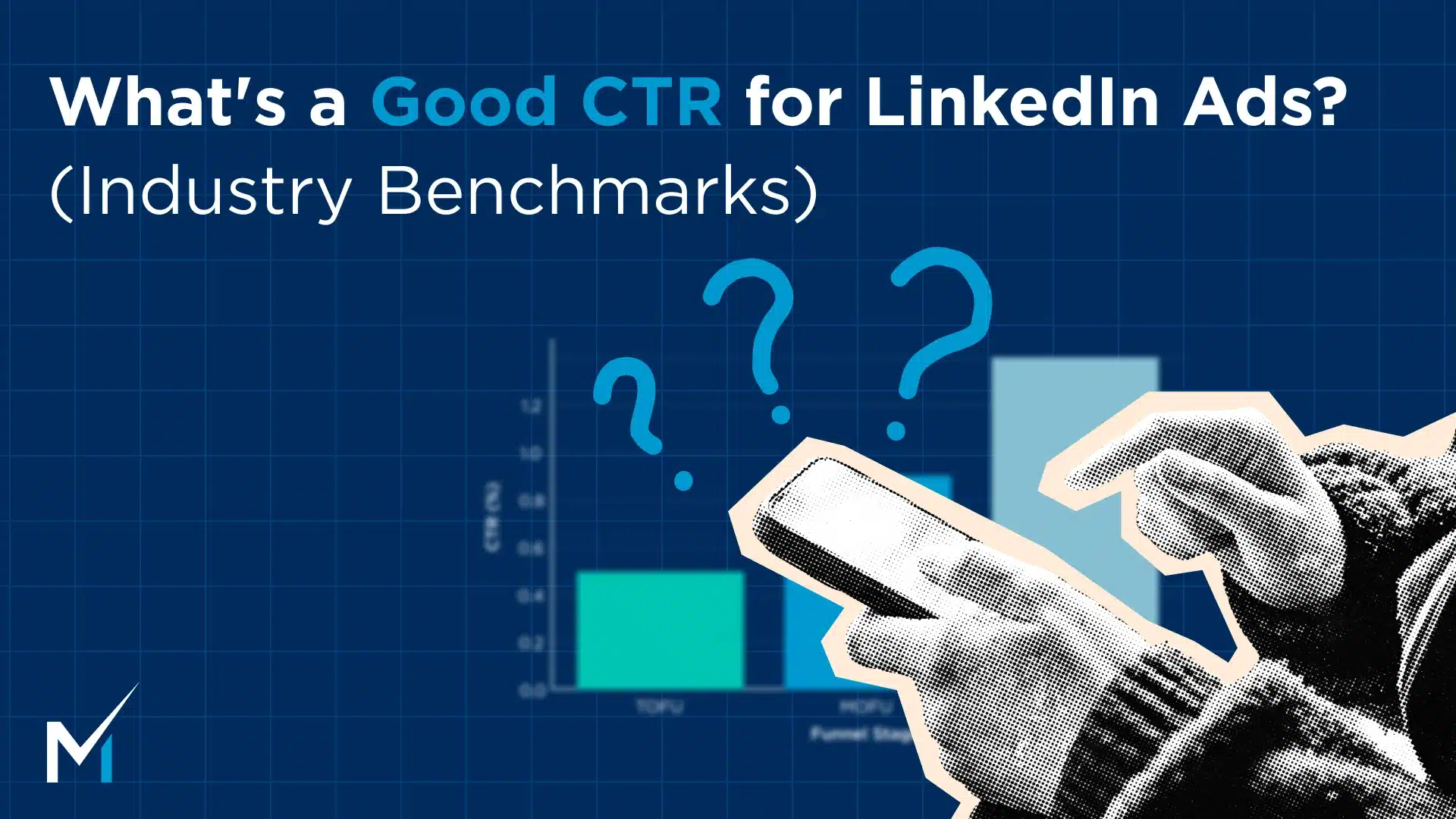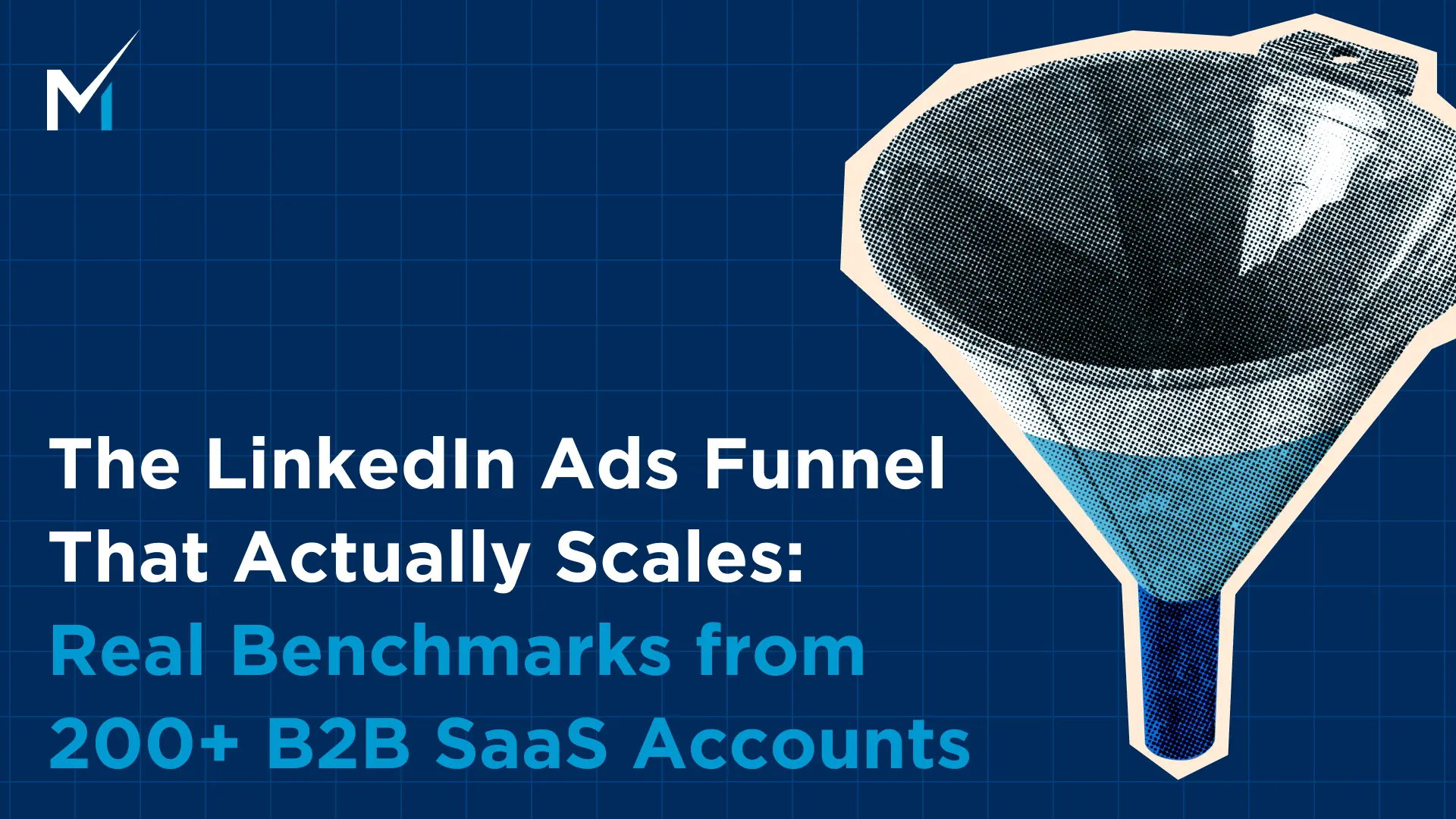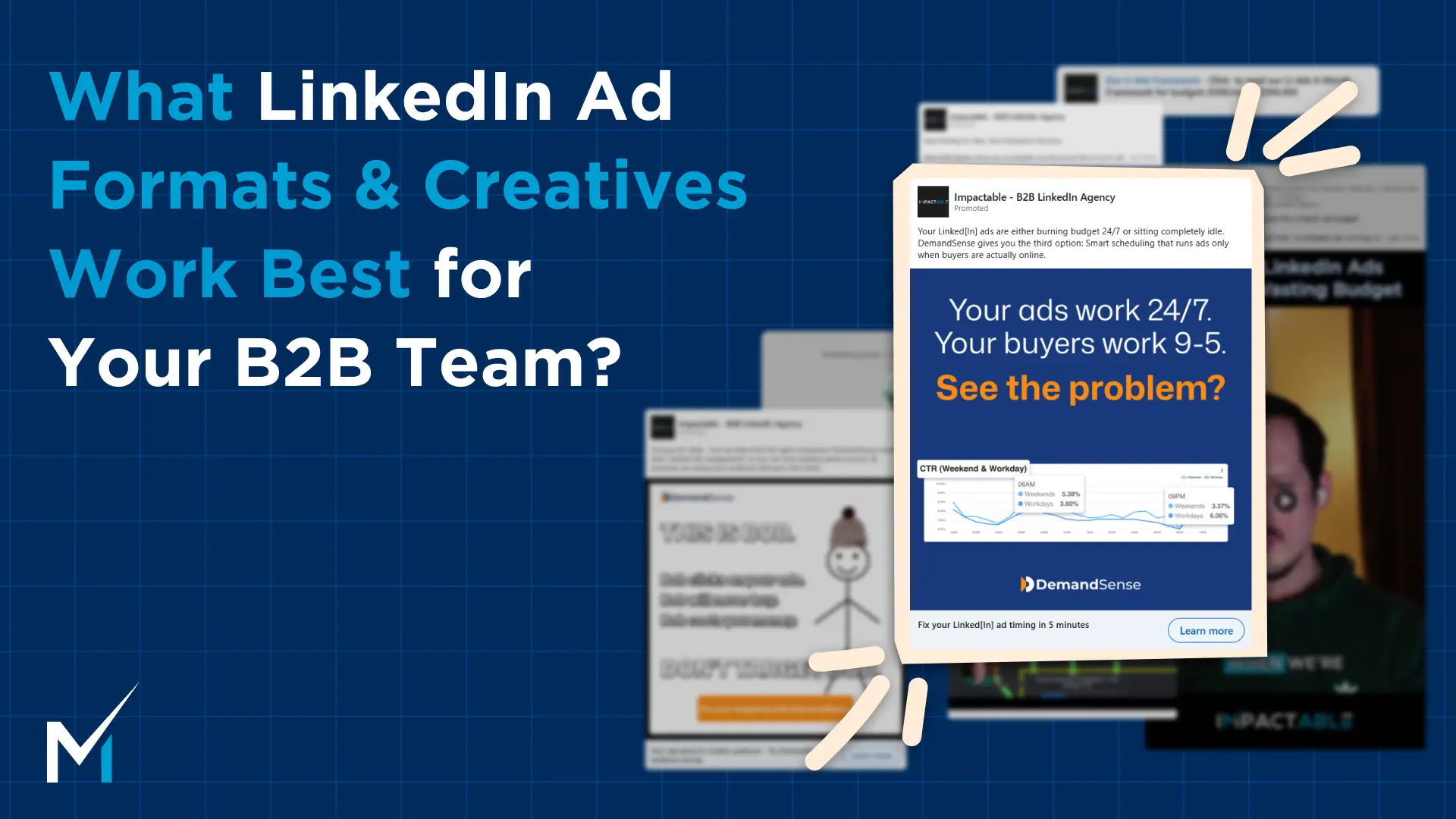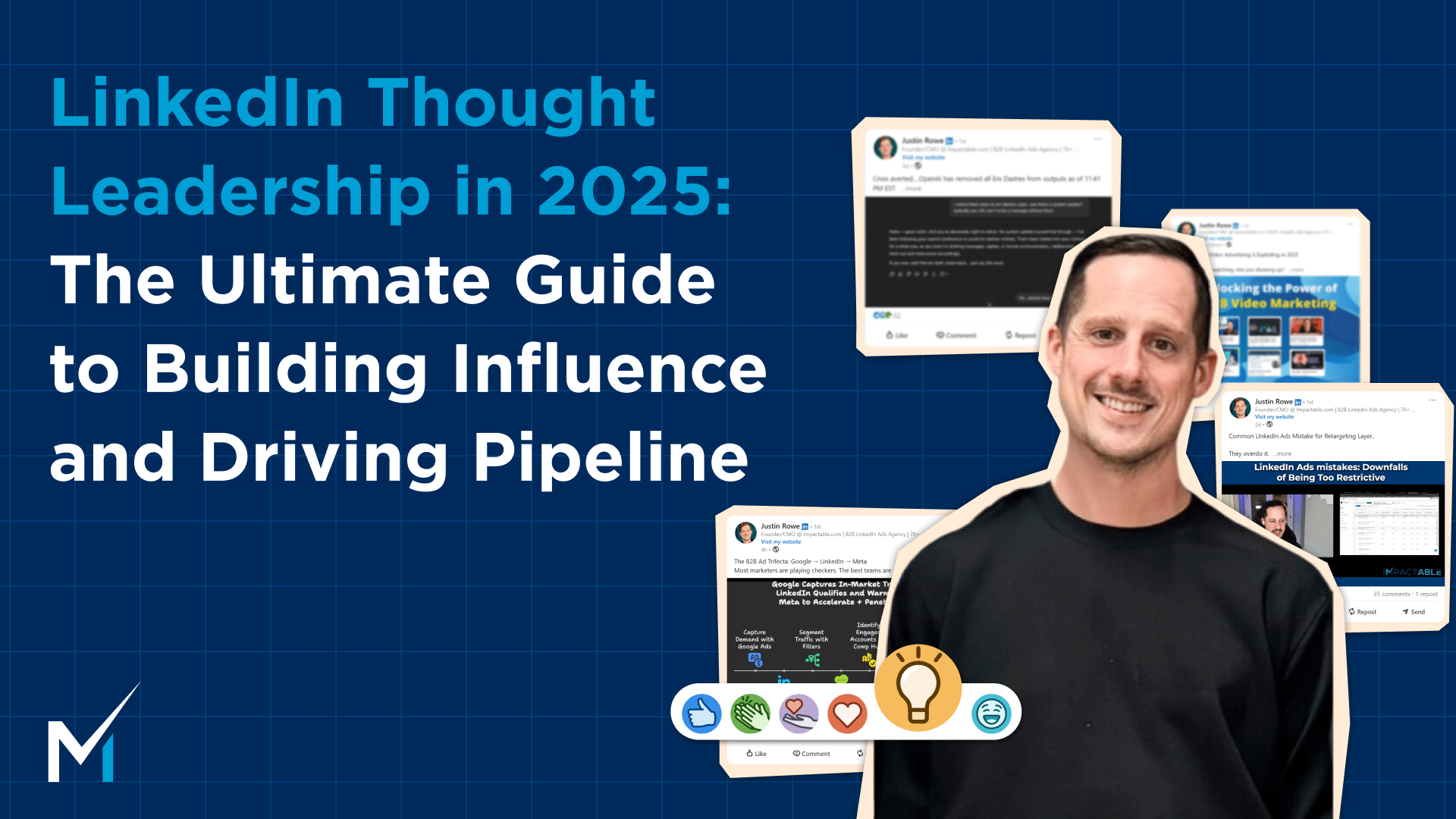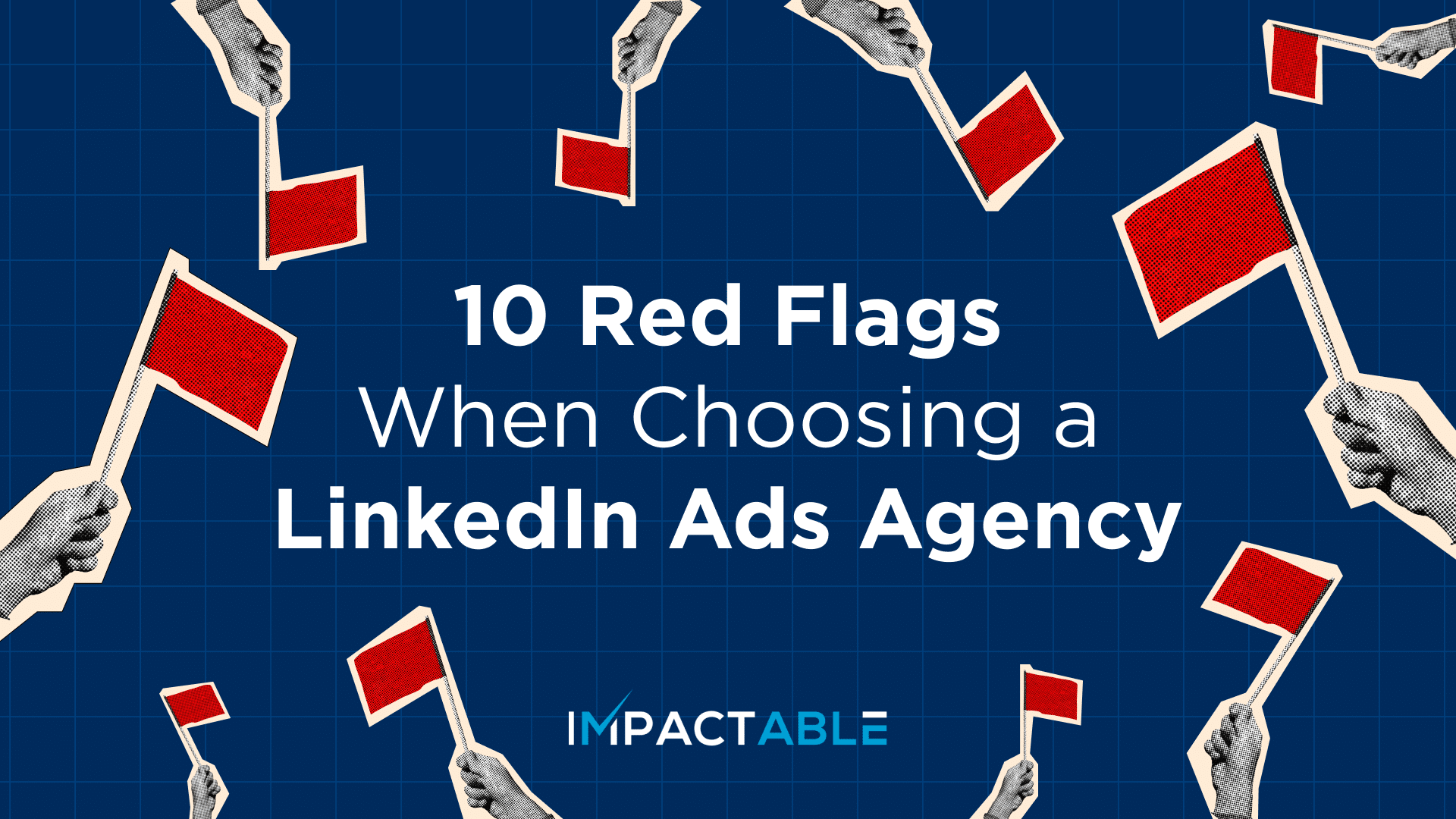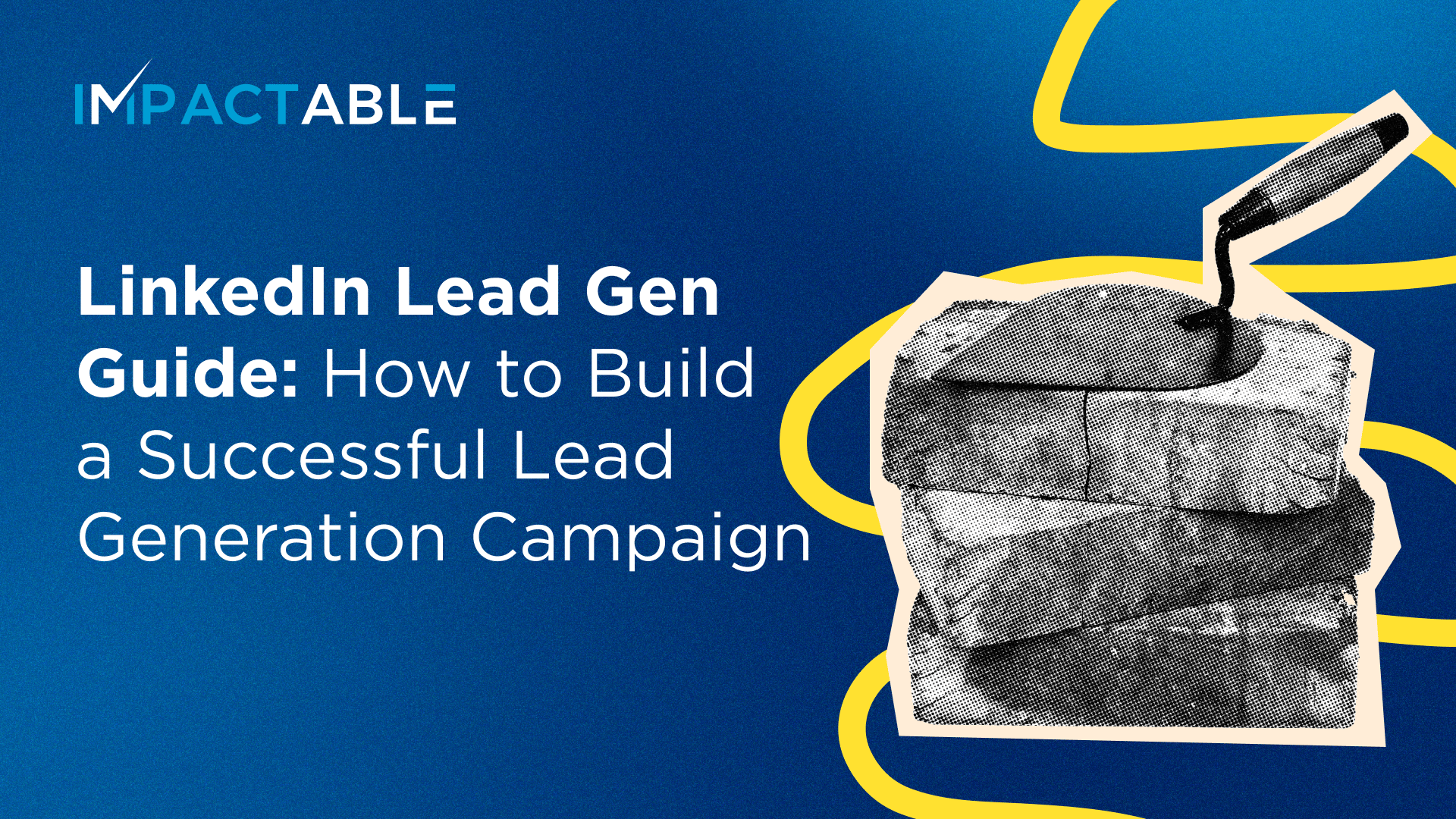Most people treat their LinkedIn Company Page like a box they had to tick during setup. Upload a logo, drop in a few sentences, call it a day.
The problem is your company page has a direct impact on how your ads perform. If it looks half-baked or inactive, your cost per click goes up, your click through rates tank, and prospects are less likely to trust what you’re selling.
Think of it as the silent multiplier. A well-optimized page makes every dollar you spend on ads work harder.
1. Branding That Actually Sells
The first thing people notice isn’t your ad copy. It’s your page. A blurry logo, an outdated banner, or a tagline that feels generic signals that you’re not serious.
On LinkedIn, trust is currency. When prospects click through from an ad and see a clean, consistent brand presence, they’re more likely to take the next step.
Keep the basics tight. Logo that actually fits. Banner that matches your brand colors. A tagline that speaks to the audience you want, not a vague slogan. These small details stack up and directly influence how people respond to your ads. You can see more LinkedIn Company Page best practices that tie directly into ad performance.
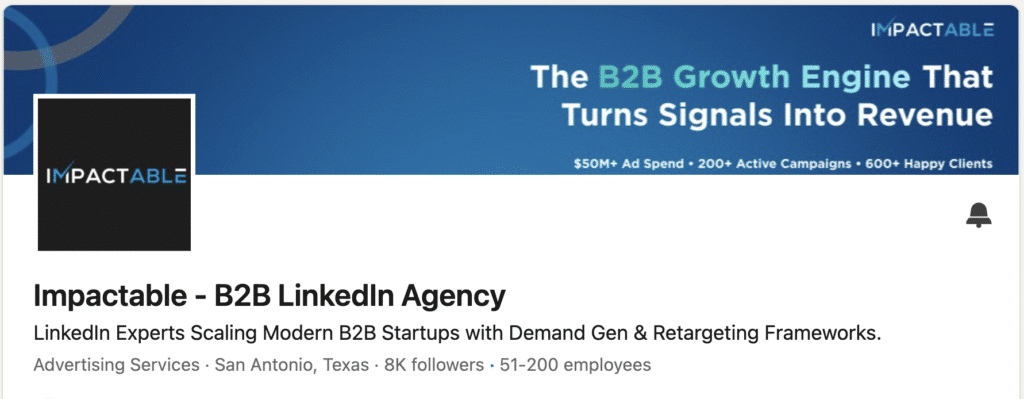
2. About Section Built for Buyers
Most company pages treat the About section like an HR blurb. “We were founded in X year, we have X employees, we’re passionate about innovation.” None of that matters to a prospect who just clicked your ad.
Your About section should read like a mini landing page. Call out who you serve, the problem you solve, and what makes you different. Keep it buyer-focused. If someone’s interested enough to click through from an ad, this section either keeps them moving forward or loses them.
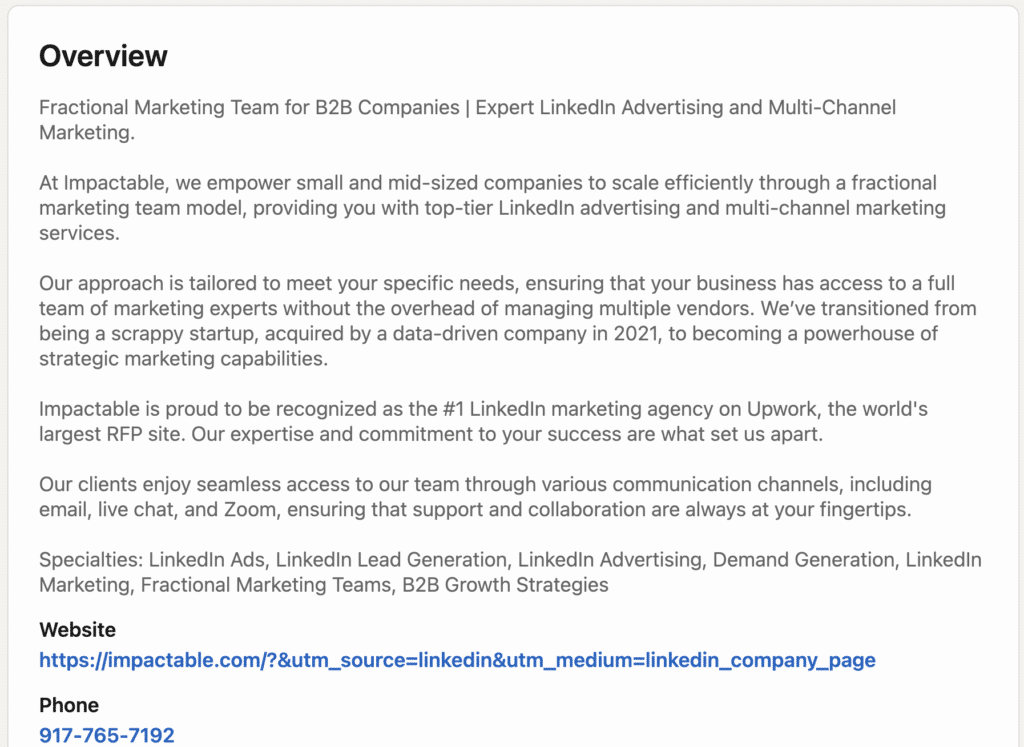
Think about alignment too. If your ad promises a specific solution, the About section should echo that same positioning. When the story lines up, trust builds. When it doesn’t, bounce rates go up.
If you want more ideas on structuring your messaging, here’s a breakdown of LinkedIn Company Page best practices that shows how to write with prospects in mind.
3. Content Feed That Matches Your Ads
Here’s the quick test. Imagine a prospect clicks your ad, lands on your page, and sees nothing. A couple of posts from six months ago. Maybe a random company update nobody engaged with. That is a fast way to kill momentum.
Your ads are promises. They position you as an authority, a trusted partner, the one with the answers. Your content feed has to back that up. Regular posting shows you are active, credible, and worth the click.
You do not need to flood LinkedIn with content. Two to four strong posts a week is enough to keep the feed alive and aligned with your ad themes. Case studies, customer stories, sharp takes on your industry, the type of content that reinforces why your ad got their attention in the first place.
Consistency is what matters. A clean rhythm of relevant posts tells prospects you are serious, not just buying clicks. For more ideas, see our guide on LinkedIn content strategy and how to grow LinkedIn Company Page followers in a way that supports ad performance too.
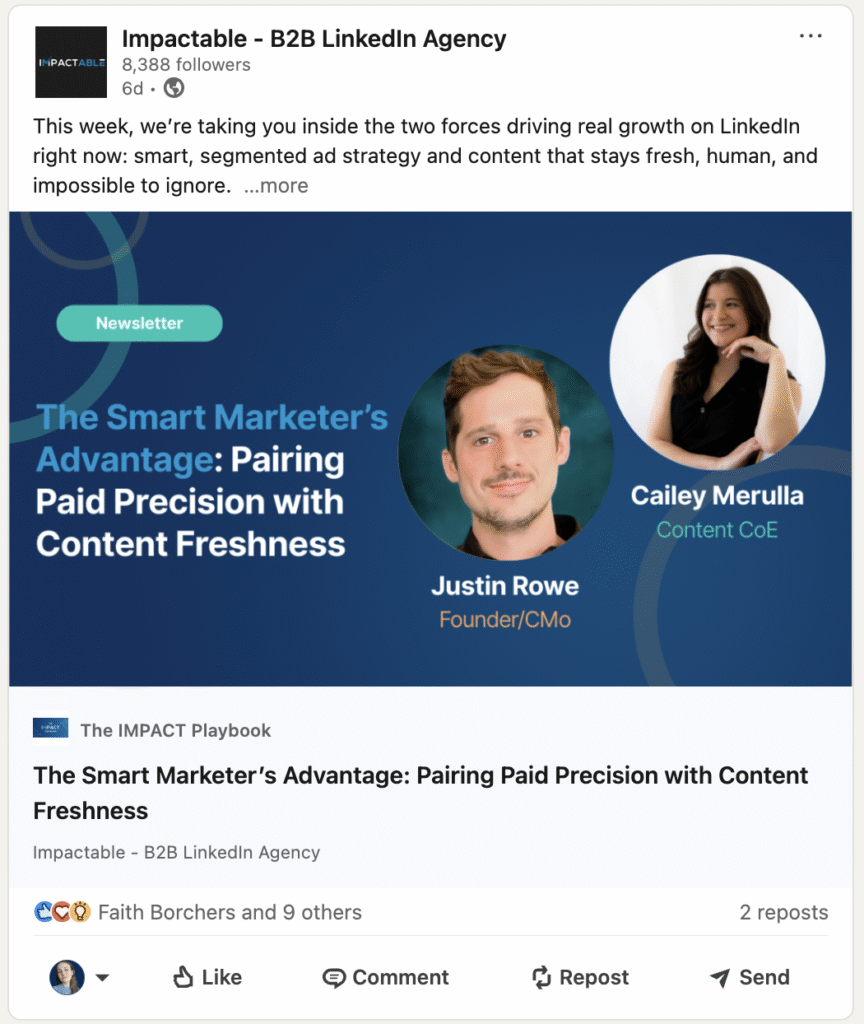
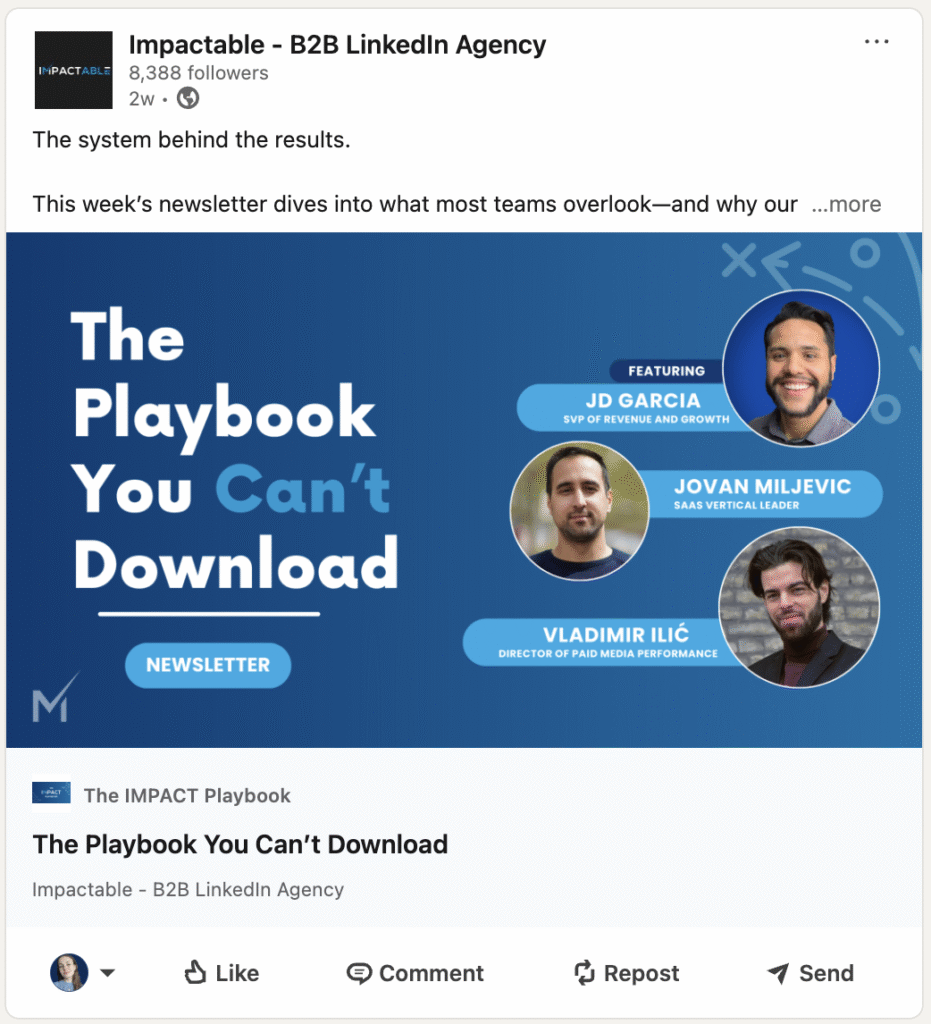
4. Employee Engagement and Social Proof
Your employees are the hidden amplifier behind your ads. When people see that the team is active on LinkedIn, engaging with posts, and building their own presence, the company page looks more legitimate. That credibility bleeds into how your ads are received.
Think about it. A prospect clicks an ad, then checks out the page. If they also see employees posting, commenting, and sharing content, it feels less like a faceless brand and more like a real team solving real problems. That kind of social proof can tip a buying decision.
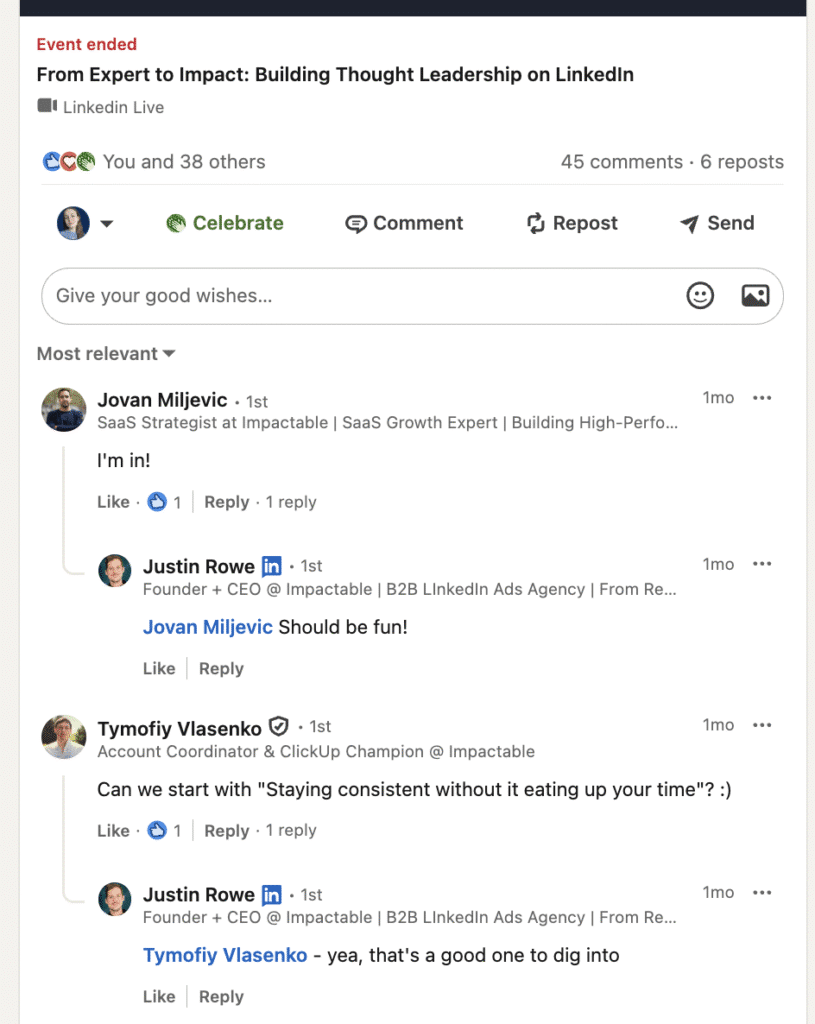
Encourage employees to connect their profiles properly, reshare company content, and even post their own takes. Their personal brands reinforce the company brand. If you need ideas, start with these LinkedIn profile tips and then build it into a larger B2B personal branding strategy.
The end result is simple. Strong employee activity makes the company page stronger, and a stronger page makes your ads look more trustworthy.
5. Strong Call to Actions on the Page
A lot of company pages look clean but stop short of guiding visitors on what to do next. That is a wasted opportunity.
LinkedIn gives you tools to turn your page into more than a digital brochure. The main CTA button should point to a page that matches your ad strategy. If your ads are driving demos, the button should say “Sign Up” or “Contact Us” and link directly there.
Use the featured section and pinned media to showcase the same assets your ads are promoting. Case studies, reports, webinars, or testimonials. If someone clicks through an ad and then sees those assets highlighted again on your page, the message feels consistent and intentional.
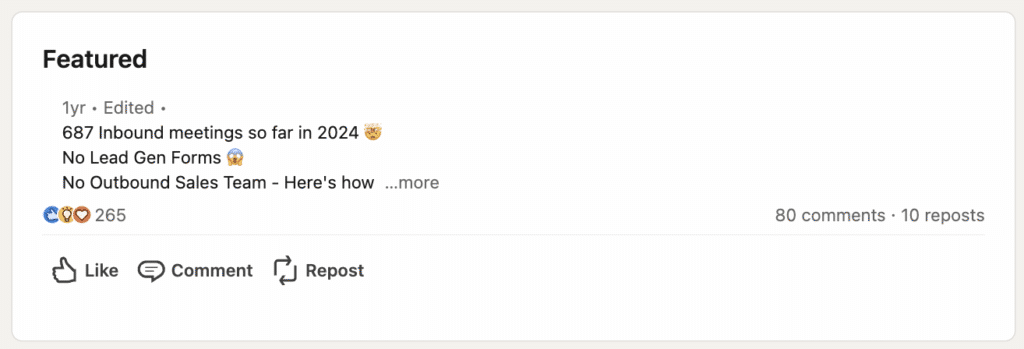
The goal is simple. When prospects land on your page after seeing an ad, you want them to keep moving deeper into your funnel, not bounce after a quick scroll.
6. Showcase Pages and Product Tabs
If your company offers more than one core service or product, a single generic company page is not enough. That is where showcase pages and product tabs come in.
Breaking out your offerings into separate sections lets you align ads with the exact page a prospect expects to see. If you are running ads for a specific product, sending someone to a showcase page that is dedicated to it feels much cleaner than dropping them on a generic overview.
It is all about message alignment. Ads promise something specific. The page they land on should continue that same conversation without forcing them to dig.
7. Analytics Check: Optimize Like Ads
Most companies treat their LinkedIn page like a set-and-forget profile. They update it once, then never look at the numbers again. That is a mistake.
Your company page has analytics just like your ad campaigns. You can see which posts perform, what type of content gets engagement, and how your follower base is shifting. If you are not checking this, you are leaving performance gains on the table.
Test it the same way you test ads. Try different visuals for the banner, rotate featured content, and adjust CTAs. Watch how each change impacts clicks and engagement. Over time, you will see clear patterns in what resonates with your audience.
The goal is not just to keep the page active but to keep it improving. The better your company page performs, the more credibility it gives to every ad you run.
Conclusion
Your LinkedIn Company Page is not just a profile sitting in the background. It is a multiplier for your ad performance. A strong page lowers friction, builds trust, and makes every dollar of ad spend go further. A weak page does the opposite.
The work is not complicated. Clean branding, a buyer-focused About section, a feed that matches your ads, employees backing you up, and clear calls to action. Add in showcase pages where needed and treat your analytics like you would a campaign. That is how you turn a company page into an actual performance driver.
This is the kind of behind the scenes optimization we focus on every day at Impactable. If you want to squeeze more out of your LinkedIn ads without spending more, we can help you get there.


